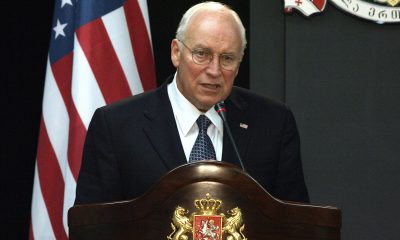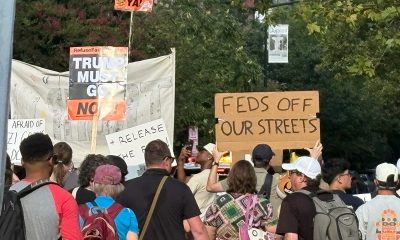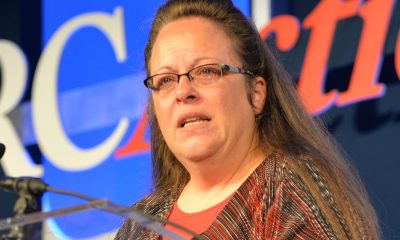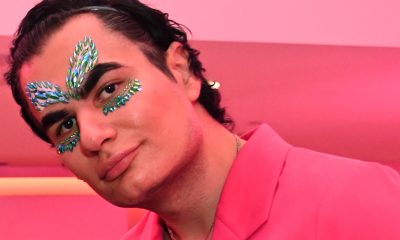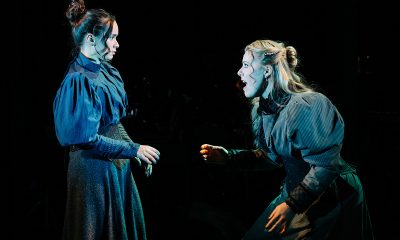Local
Covering Frank Kameny
A reporter’s 35-year journey chronicling the nation’s preeminent gay activist
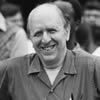
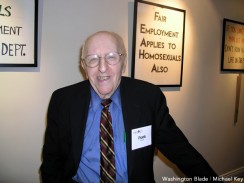
Frank Kameny served as a colorful, reliable source for the Blade and other news outlets during his decades of activism. (Washington Blade photo by Michael Key)
I met Frank Kameny for the first time in the summer of 1974 at a meeting in Washington of the Gay Activists Alliance, now the Gay and Lesbian Activists Alliance.
At 24 years old, I had just landed my first job as a reporter covering the energy and environment beat for a company that published newsletters specializing in reporting on government regulations.
With an undergraduate degree in political science and a year’s worth of graduate studies in journalism under my belt, I walked into that GAA meeting at D.C.’s Quaker Meeting House near Dupont Circle knowing next to nothing about gay rights, gay politics or the gay community.
In the process we know as coming out, I had come to terms with myself as a gay man just months earlier.
So with that as a backdrop, I listened intently to the main topic of the meeting — reports of arrests of gay men at cruising areas by undercover officers assigned to the D.C. police vice squad.
Most of the arrests were not linked to sex in public places, one of the members reported. The men, whom the GAA member described as consenting adults, were merely seeking to meet one another for a sexual tryst or perhaps a lasting friendship that was to take place in the privacy of their homes, not in the public areas where they met.
But in an action I learned later was a routine practice throughout the country at that time, the undercover officers reportedly posed as willing participants and enticed the gay men into “soliciting” them to engage in sodomy, which was a criminal offense that led to an arrest. In some cases the undercover officers used body language suggesting they were inviting the men to touch them in a sexually suggestive way.
If the men took the bait and touched the officers, they were charged with committing a lewd act, a development that could ruin their careers, especially if they worked for the government.
After listening to these reports, a man appearing in his late 40s or early 50s with a booming voice and an obvious thorough knowledge of the issue at hand mapped out a strategy for GAA’s and the gay community’s response: The entrapment arrests of gay men would be portrayed as an “utter” waste of taxpayer’s money and police resources at a time when “real” crime was running rampant in the city.
This self-assured man, who I quickly learned was gay rights pioneer Frank Kameny, raised his voice to emphasize each of his points, attracting the attention of a maintenance worker in the hallway outside the room. He said police officials were unresponsive to earlier requests to stop the entrapment arrests and it was time to take another course of action.
Kameny said GAA should enlist community allies to help it lobby the City Council to eliminate city funding for the vice squad, which was known at the time as the Prostitution, Perversion, and Obscenity (PPO) Branch.
“It’s an outrage and an injustice,” I recall him saying. “We’re citizens of this city. The police, like all government officials, are public servants. And public servants answer to us.”
Much to my amazement, within a year or two, the City Council, voted to eliminate from the police budget funding for the PPO Branch. Although some of its work in the area of prostitution continued, the police practice of entrapment of gay men soon came to an end.
I was naïve and uninformed on the nuances of the gay rights movement when I attended that meeting in 1974. But I knew a good news source when I saw one.
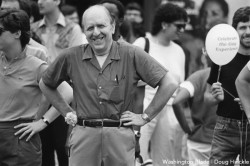
Frank Kameny become known for his sense of humor during his long activist career and feared his tactics would get him disbarred if he had decided to pursue a law degree. (Washington Blade photo by Doug Hinckle)
Frank Kameny over the next 25 years or more was to become my preeminent news source in my coverage of the LGBT community as a reporter for the Washington Blade.
From the start, I had the good fortune of getting to know Frank Kameny and getting a crash course from him on the history of the gay movement and its current struggles and aspirations.
Since Kameny’s death last week, much has been written about his vast contribution to the LGBT movement over a 50-year period, especially in the decade before the Stonewall rebellion of 1969, which is viewed as the starting point of the modern gay movement.
What hasn’t been reported as widely is Kameny’s impact on the lives of individual lesbians, gay men, and transgender people whom he helped and with whom he interacted. His self-confident and assertive demeanor on behalf of the rights of all LGBT people and his unyielding spirit for fighting injustice – no matter how great the odds appeared to be – came across to those around him.
I’ll never forget the story told to me by a gay man I met at a GAA meeting about six months after that first meeting I attended in the summer of 1974. Appearing in his 40s, the man told me he was born and raised in a conservative, fundamentalist Christian household in southern Virginia and had struggled to accept his homosexuality. He said five years of psychotherapy upon moving to the D.C. area had little effect in helping shake his inner struggles over his sexual orientation.
He said his meeting Kameny and other activists at GAA meetings, and subsequent weekly phone conversations with Kameny on a wide range of issues over a period of months, boosted his self-confidence to a degree that he could never attain in years of therapy.
“I fired my therapist,” he told me while smiling broadly “Frank and the other folks here gave me the insight to understand that the external forces of discrimination and oppression and homophobia are what got me down,” I recall him saying.
Kameny’s assistance to individual LGBT people blossomed in his role as a paralegal counsel representing gays encountering problems with security clearances in the late 1960s through the 1980s. When his clients were comfortable going public with their case, Kameny provided me with copies of his legal briefs challenging actions by various U.S. government agencies, often the Defense Department, seeking to deny or revoke a gay person’s security clearance.
Those targeted for loss of a clearance usually worked for the government or for a private company doing contract work for the government. The main argument used for revoking a clearance was that gay people were susceptible to blackmail and were thus a threat to the safeguarding of government secrets.
Kameny often argued that the government had yet to disclose a single case where a gay person breached government secrets due to blackmail or coercion related to his or her sexual orientation.
He noted that government security officials appeared to be obsessed with the private sex lives of gays holding security clearances. In the course of investigating a gay person over a clearance, security officials demanded to know the identities of all of their sex partners over a period of years and insisted they reveal the specific types of sexual acts the gay person performed with his or her partners.
Kameny’s characteristic response to these inquires surfaced in a 1969 case in which he represented a New York gay man named Benning Wentworth, whose application for a clearance was opposed by the government solely on grounds of his status as a “sexually active” homosexual.
“We state to the world, as we have stated for the public, we state for the record and, if the [Defense] Department forces us to carry the case that far, we state for the courts that Mr. Wentworth, being a healthy, unmarried, homosexual male, 35 years old, has lived, and does live a suitable homosexual life, in parallel with the suitable active heterosexual sexual life lived by 75 percent of our healthy, unmarried, heterosexual males holding security clearances,” Kameny stated in a government hearing to adjudicate Wentworth’s clearance application.
Added Kameny, “Mr. Wentworth will get his clearance as the sexually active homosexual that he is and that he will continue to be…just as heterosexuals get their clearances as sexually active heterosexuals.”
He won many of his cases when, at his suggestion, his clients submitted letters disclosing their sexual orientation to co-workers and family members, eliminating, in Kameny’s assessment, any chance of blackmail threats to reveal the client’s homosexuality.
Some of his clients and fellow activists urged Kameny to get his law degree and become a lawyer, noting that he already knew more about the field of security clearance law than most lawyers. He told me his becoming a lawyer would tie his hands, saying the sometimes outlandish tactics he used would get him disbarred.
“They can’t disbar me if I’m not a member of the bar,” he often said.
In cases where he represented members of the military under investigation for being gay in the years prior to “Don’t Ask, Don’t Tell,” Kameny was blunt about the only means of preventing a discharge: “Lie through your teeth,” he told his clients, or refuse to answer any questions about your sexual orientation.
In one of his military cases in the 1980s, Kameny was scheduled to attend a hearing to discuss planned action by the Army to discharge a service member who was identified as being gay by an acquaintance who was pressured into “snitching” on his fellow service member, as Kameny put it.
For some reason, Army officials insisted on meeting with the service member in private, saying Kameny couldn’t attend that particular session, in which the service member was to be “interviewed,” Kameny said.
As a gesture of protest, Kameny placed his foot in the doorway of the meeting room, preventing one of the officials from closing the door. He backed down after being threatened with arrest, saying the gesture was intended to emphasize his strong opposition to the closed meeting.
His use of fiery language as well as humor often surfaced in his testimony before public hearings held by governmental bodies, including the D.C. City Council.
In the early 1990s, Kameny testified before a D.C. Council committee deliberating over a proposed alley closing sought by Georgetown University to clear the way for construction of a new law school building located near the U.S. Capitol.
Gay activists, led by Kameny and GAA, called on the Council to withhold approval of the alley closing and thus prevent construction of the building until the university ended its policy of refusing to recognize gay student groups on campus.
Shortly after beginning his testimony, Kameny opened his briefcase and pulled out a spray can that he identified as a room deodorizer. He pressed down on the nozzle, spraying a mist in the direction of the Council members seated about 10 feet in front of him.
The “stench of discrimination” being carried out by Georgetown University against gay student groups cannot continue, he said, drawing laughter from the Council members and the audience in the hearing room.
Kameny also directed his sense of humor toward anti-gay organizations, which he closely monitored. On several occasions during the 1980s and 1990s he rushed to the city’s office of corporations and created his own corporation under the exact name of an anti-gay group, preventing the group from setting up its own corporation to do business in D.C.
Although he’s known mostly for his work in the LGBT rights movement, Kameny contributed his talents to other progressive causes. He became the first open gay to be appointed to a prominent city post in the 1970s, when Walter Washington, the city’s first mayor under D.C.’s newly acquired home rule government, named Kameny to the D.C. Commission on Human Rights.
In the early 1980s, Kameny won election to the D.C. Statehood Constitutional Convention and played a lead role in drafting a constitution for the proposed State of New Columbia.
During all of his years as an activist and movement leader in which I had the privilege to cover him, Kameny excelled as a news source in more stories than I can count. Thank you, Frank. You’ll be sorely missed.
Maryland
Salisbury, Md. rainbow crosswalk removed on Veterans Day
Mayor’s order denounced by LGBTQ activists as act of bigotry
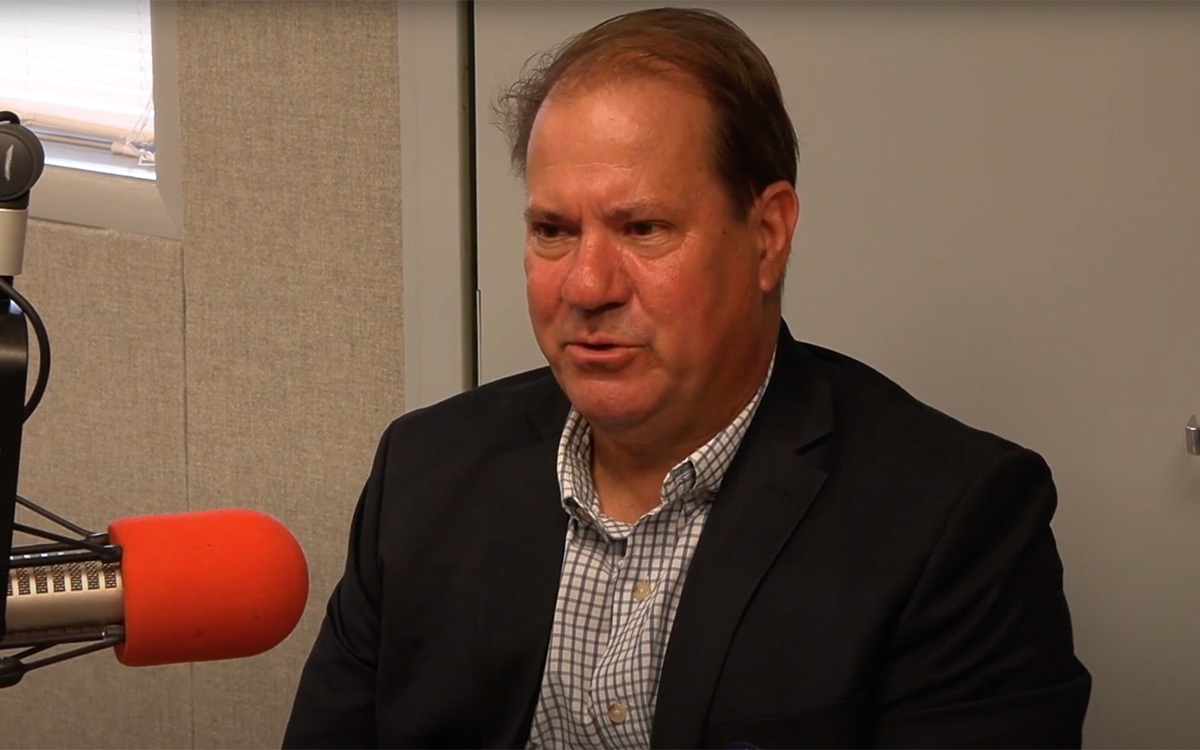
Under the directive of its mayor and over strong objections from LGBTQ rights advocates and their supporters, the city of Salisbury, Md. on Nov. 11 removed a rainbow crosswalk from a prominent intersection across from the mayor’s office and the city’s public library.
Salisbury LGBTQ rights advocate Mark DeLancey, who witnessed the crosswalk removal, said instead of painting over it as other cities have done in removing rainbow crosswalks, a powerful grinding machine was used to rip apart the asphalt pavement under the crosswalk in what he believes was an effort by the mayor to “make a point.”
Like officials in other locations that have removed rainbow crosswalks, Salisbury Mayor Randy Taylor said the crosswalk removal was required under U.S. Department of Transportation regulations put in place by the Trump administration that do not allow “political” messages on streets and roadways.
“Since taking office, I’ve been transparent about my concerns regarding the Pride crosswalks installed in Downtown Salisbury,” Taylor said in a statement. “While I have made every effort to respect the decisions of previous administrations and the folks that supported them, it has become clear that a course of correction – as planned – is necessary to align with current Department of Transportation standards for roadway markings,” he said in his Nov. 7 statement that was posted on the city’s Facebook page.
DeLancey is among the activists and local public officials in many cities and states that dispute that the federal Department of Transportation has legal authority to ban the Pride crosswalks. D.C. and the Northern Virginia jurisdictions of Arlington and Alexandria are among the localities that have refused to remove rainbow crosswalks from their streets.
“He decided to take this on himself,” DeLancey said of Taylor’s action. “It’s not a law. It’s not a ruling of any kind. He just said that was something that should happen.”
DeLancey points out that Salisbury became the first jurisdiction in Maryland to install a rainbow crosswalk on a public street in September 2018.
“This is another blatant attempt by our Republican mayor to remove any references to groups that don’t fit with his agenda,” Salisbury LGBTQ advocate Megan Pomeroy told the local publication Watershed Observer. “The rainbow crosswalk represents acceptance for everyone. It tells them, ‘You matter. You are valued. You are welcome here,’” she was quoted as saying.
The publication Delmarva Now reports that a longtime Salisbury straight ally to the LGBTQ community named K.T. Tuminello staged a one-person protest on Nov. 10 by sitting on the sidewalk next to the rainbow crosswalk holding a sign opposing its removal.
“Tuminello said Nov. 10 he had been at the embattled crosswalk since 12 a.m. that morning, and only three things could make him leave: ‘I get arrested, I have to get into an ambulance because of my medical difficulties, or Randy Taylor says you can keep that one rainbow crosswalk,’” the Delaware Now article states.
DeLancey said he has known Tuminello for many years as an LGBTQ ally and saw him on the night he staged his sit-in at the site of the crosswalk.
“I actually went to him last night trying to give him some water,” DeLancey told the Washington Blade. “He was on a hunger strike as well. He was there for a total of 40 hours on strike, not eating, no sleeping in the freezing cold”
Added DeLancey, “He has been supporting our community for decades. And he is a very strong ally, and we love his contribution very much.”
Political observers have pointed out that Salisbury for many years has been a progressive small city surrounded by some of Maryland’s more conservative areas with mostly progressive elected officials.
They point out that Taylor, a Trump supporter, won election as mayor in November 2023 with 36.6 percent of the vote. Two progressive candidates split the vote among themselves, receiving a combined total of 70.8 percent of the vote.
Virginia
Ghazala Hashmi names Equality Virginia executive director to transition team
Narissa Rahaman will join Adam Ebbin, Mark Sickles on LG-elect’s committee.
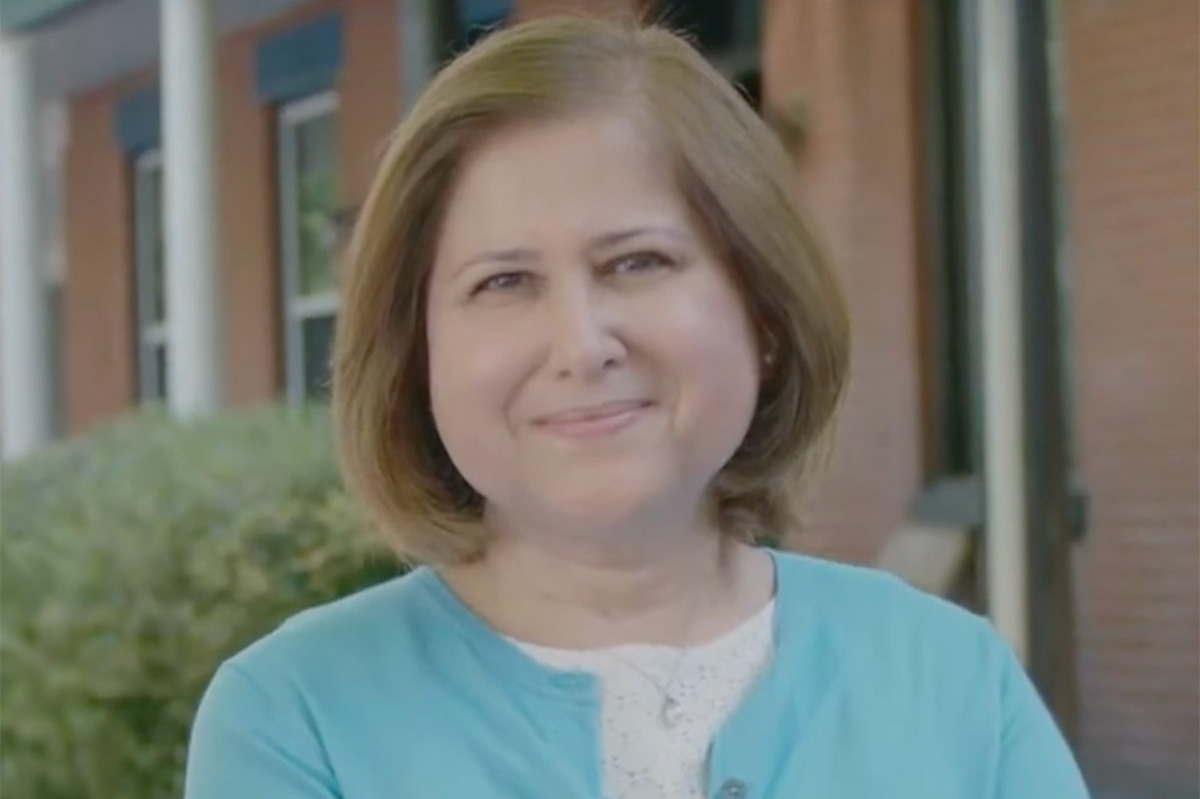
Virginia Lt. Gov.-elect Ghazala Hashmi has named Equality Virginia Executive Director Narissa Rahaman to her transition team.
State Sen. Adam Ebbin (D-Alexandria) and state Del. Mark Sickles (D-Fairfax County) are among those who Hashmi also named to her Transition Committee.
“I am honored to have this diverse group of leaders join our transition,” said Hashmi in a statement. “Their experience, perspective, and commitment to public service will help build an Office of the Lieutenant Governor that is responsive, innovative, and relentlessly focused on improving the lives of every Virginia resident.”
“Together, we will develop a thoughtful roadmap for the work ahead — one that ensures we are engaging communities, strengthening partnerships across the state, and preparing this office to serve with purpose and conviction from Day One,” she added. “I am grateful to each member for bringing time, expertise, and passion to this effort.”
Hashmi, a Democrat, defeated Republican John Reid, who is openly gay, on Nov. 4.
Hashmi will succeed outgoing Lt. Gov. Winsome Earle-Sears on Jan. 17.
District of Columbia
Capital Pride files anti-stalking complaint against local LGBTQ activist
Darren Pasha denies charge, claims action is linked to Ashley Smith’s resignation
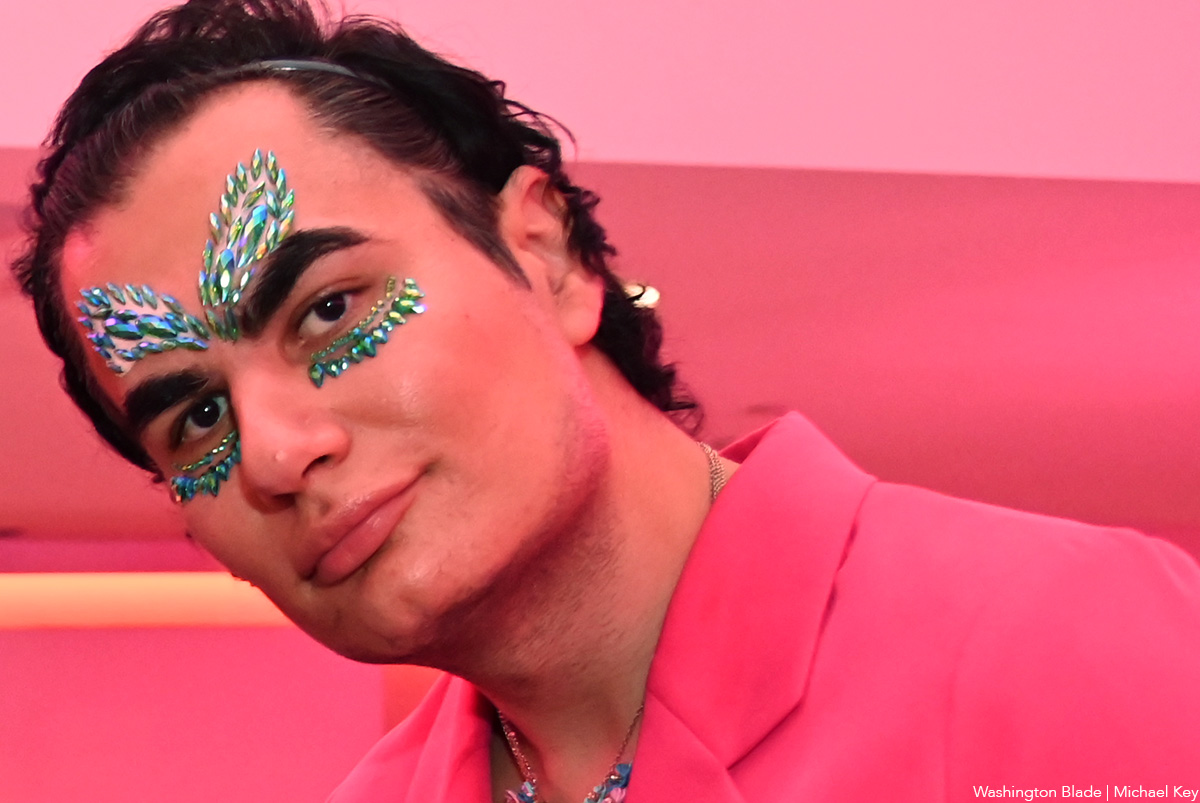
Capital Pride Alliance, the D.C.-based LGBTQ group that organizes the city’s annual Pride events, filed a Civil Complaint on Oct. 27 against local LGBTQ activist and former volunteer Darren Pasha, accusing him of engaging in a year-long effort to harass, intimidate, and stalk Capital Pride’s staff, board members, and volunteers.
The complaint, which was filed in D.C. Superior Court, was accompanied by a separate motion seeking a court restraining order, preliminary injunction and anti-stalking order prohibiting Pasha from “any further contact, harassment, intimidation, or interference with the Plaintiff, its staff, board members, volunteers, and affiliates.”
According to online court records, on Oct. 28, a judge issued an “initial order” setting the date for a scheduling conference for the case on Feb. 6, 2026. As of the end of the business day on Friday, Nov. 7, the judge did not issue a ruling on Capital Pride’s request for an injunction and restraining order
The court records show that on Nov. 5 Pasha filed an answer to the complaint in which he denies all allegations that he targeted Capital Pride officials or volunteers for stalking or that he engaged in any other improper behavior.
“It is evident that the document is replete with false, misleading, and unsubstantiated assertions,” Pasha says in his response, adding that “no credible or admissible evidence has been provided” to meet the statutory requirements for an anti-stalking order.
The Capital Pride complaint includes an 18-page legal brief outlining its allegations against Pasha and an additional 167-page addendum of “supporting exhibits” that includes multiple statements by witnesses whose names are blacked out in the court filing documents.
“Over the past year, Defendant Darren Dolshad Pasha (“DSP”} has engaged in a sustained and escalating course of conduct directed at CPA, including repeated and unwanted contact, harassment, intimidation, threats, manipulation, and coercive behavior targeting CPA staff, board members, volunteers, and affiliates,” the Capital Pride complaint states.
It continues, “This conduct included physical intimidation, unwanted physical contact, deception to gain unauthorized access to events, retaliatory threats, abusive digital communication, proxy-based harassment, and knowing defiance of organizational bans and protective orders.”
The sweeping anti-stalking order requested in Capital Pride’s court motion would prohibit Pasha from interacting in person or online or electronically with “all current and future staff, board members, and volunteers of Capital Pride Alliance, Inc.”
The proposed order adds, the “defendant shall stay at least 200 yards away from the principal offices of Capital Pride Alliance” and “shall stay at least 200 yards away from all Capital Pride Alliance events, event venues, associated activities, and affiliated gatherings.”
The reason for these restrictions, according to the complaint, is that Pasha’s actions toward Capital Pride staff, board members, and volunteers allegedly reached the level of causing them to fear for their safety, become “alarmed, disturbed, or frightened,” or suffer emotional distress as defined in D.C.’s anti-stalking law.
Among the Capital Pride officials who are identified by name and who have included statements in the complaint in support of its allegations against Pasha are Ashley Smith, the former Capital Pride Alliance board president, and June Crenshaw, the Capital Pride Alliance deputy director.
“I am making this declaration based on my personal knowledge to support CPA’s petition for a Civil Anti-Stalking Order (ASO) against Daren Pasha,” Smith says in his court statement. “My concerns about the respondent are based on my personal interactions with him as well as reports I have received from other members of the CPA community,” Smith states.
The Capital Pride complaint against Pasha and its supporting documents were filed by D.C. attorney Nick Harrison of the local law firm Harrison-Stein PC.
In his 16-page response to the complaint that he says he wrote himself without the aid of an attorney, Pasha says the Capital Pride complaint against him appears to be a form of retaliation against him for a dispute he has had with the organization and its then president, Ashley Smith, over the past year.
His response states that the announcement last month by Capital Pride that Smith resigned from his position as board president on Oct. 18 after it became aware of a “claim” regarding Smith and it had opened an investigation into the claim supports his assertion that Smith’s resignation is linked to his year-long claim that Smith tarnished his reputation.
Among his allegations against Smith in his response to the Capital Pride complaint, Pasha accuses Smith of using his position as a member of the board of the Human Rights Campaign, the D.C.-based national LGBTQ advocacy organization, to persuade HRC to terminate his position as an HRC volunteer and to ban him from attending any future HRC events. He attributes HRC’s action against him to “defamatory” claims about him by Smith related to his ongoing dispute with Smith.
The Capital Pride complaint cites HRC officials as saying Pasha was ousted from his role as a volunteer after he allegedly engaged in abusive and inappropriate behavior toward HRC staff members and other volunteers.
Capital Pride has so far declined to disclose the reason for Smith’s resignation pending an internal investigation.
In its statement announcing Smith’s resignation, a copy of which it sent to the Washington Blade, Capital Pride Alliance says, “Recently, CPA was made aware of a claim made regarding him. The organization has retained an independent firm to initiate an investigation and has taken the necessary steps to make available partner service providers for the parties involved.”
The statement adds, “To protect the integrity of the process and the privacy of all involved, CPA will not be sharing further information at this time.”
Smith did not respond to a request by the Blade for comment, and Capital Pride has declined to disclose whether Smith’s resignation is linked in any way to Pasha’s allegations.
The Capital Pride complaint seeks to “characterize me as posing a threat sufficient to justify the issuance of a Civil Anti-Stalking Order (CAO), yet no credible or admissible evidence has been provided to satisfy the statutory elements required under D.C. Code 22-3133,” Pasha states in his response.
“CPA’s assertions fail to establish any such conduct on my part and instead appear calculated to discredit and retaliate against me for raising legitimate concerns regarding the conduct of its former Board President,” he states in his response.
In its complaint against Pasha and its legal memorandum supporting its request for an anti-stalking order, Capital Pride provides a list of D.C. Superior Court records that show Pasha has been hit with several anti-stalking orders in cases unrelated to Capital Pride in the past and has violated those orders, resulting in his arrest in at least two of those cases.
“A fundamental justification for granting the [Anti-Stalking Order] lies in the Respondent’s extensive and recent criminal history demonstrating a proven propensity for defying judicial protective measures,” the complaint states. “This history suggests that organizational bans alone are insufficient to deter his behavior, elevating the current situation to one requiring mandatory judicial enforcement,” it says.
“It is alleged that in or about June 2025, Defendant was convicted on multiple counts of violating existing Anti-Stalking Orders in matters unrelated to Capital Pride Alliance (“CPA”),with consecutive sentences imposed, purportedly establishing a pattern of contempt for judicial restraint,” Pasha states in his court response to the Capital Pride complaint.
“These allegations are irrelevant to the matter currently before the Court,” his response continues. “The events cited are entirely unrelated to CPA and the allegations underlying the petition for a Civil Anti-Stalking Order. Moreover, each of these prior matters has been fully adjudicated, resolved, and dismissed, and therefore cannot serve as a basis to justify the issuance of a permanent Civil Anti-Stalking Order in this unrelated proceeding.”
He adds in his response, “Any reliance on such prior matters is misleading, prejudicial, and legally insufficient.”
-

 U.S. Supreme Court3 days ago
U.S. Supreme Court3 days agoSupreme Court rejects Kim Davis’s effort to overturn landmark marriage ruling
-

 District of Columbia3 days ago
District of Columbia3 days agoCapital Pride files anti-stalking complaint against local LGBTQ activist
-

 Movies5 days ago
Movies5 days agoSuperb direction, performances create a ‘Day’ to remember
-

 Theater4 days ago
Theater4 days agoAstounding ‘LIZZIE’ builds on legendary axe murder tale

